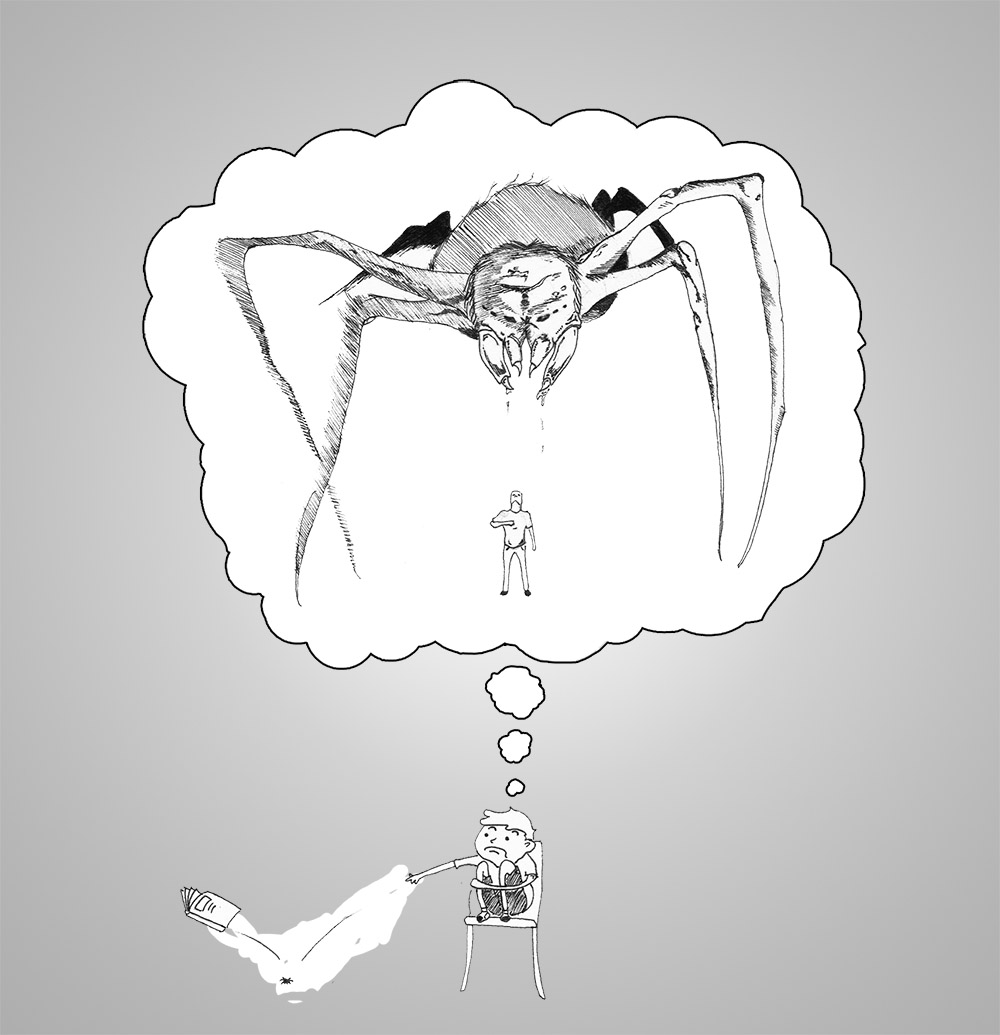

From the infamous arachnophobia to the ironic logophobia (fear of words), phobias are a mental disorder that come in all shapes and sizes. While they are relatively uncommon, the sheer variety of phobias makes them an interesting topic of study for many psychologists. James Smith, a Modern World History and Psychology teacher, described phobias “as an irrational fear of something,” potentially creating a spastic and panicked response in the victim. “They can be debilitating, but in most cases it’s not really a problem.”
The term “arachnophobia” is thrown around sometimes whenever a spider visibly terrifies someone. While it may seem that these instances are often misnomers, Smith disagrees. “Almost everyone has a phobia or two,” he said. These are not limited to just fears of creatures; social phobias, like public speaking are also very common.
Smith admits, “I am a little fearful of public speaking and when I first became a teacher I was paralyzed by speaking in front of class.” Of course, all phobias are treatable. Cognitive-behavioral therapy (CBT) is common in treating severe phobias. “CBT is a specific way to deal with phobias and things to do when confronted with the [subject of fear]. CBT tried to break this down,” Smith explained. So while everyone may have a phobia or two, severe phobias often require therapy to control.
Among high school students, phobias are just one of several very common mental disorders. Others, such as obsessive compulsive disorder (OCD), attention deficit disorder (ADD), and even major depressive disorder, can seem intimidating to think about or admit to. However, these conditions are natural and unpredictable, and treatment should always trump pride. If untreated, these disorders can vary in magnitude and lead to dire consequences.
Everyone has a friend who they’ve called “OCD” at one point or another. In fact, it’s not unfair to say that many people exhibit compulsive tendencies, but often such behavior falls short of a true diagnosis. As former AP Psychology student Kurtis Young explains, “OCD means obsessive compulsive disorder. It’s where you just become obsessed with something—compulsive—and have to act on it.” Someone with OCD might keep washing their hands five or six times, just an excessive amount.
The qualities of OCD are probably easily recognizable because of its portrayals in popular culture. In the USA television series Monk, Tony Shalhoub plays a detective afflicted with OCD. However, even he has trouble coping with everyday life. “It’s important to remember that OCD isn’t always good for cleanliness,” Young added, because hoarders can be notorious for their habits, but often times suffer from OCD.
ADD and a related disorder, attention deficit hyperactivity disorder (ADHD), is a tricky disorder. It is characterized by a general lack of focus and impulsive behavior, while ADHD is very similar but unsurprisingly adds in hyperactivity. ADD is notorious for being one of the most diagnosed mental disorders in the country, especially in school-age children.
In an article by Allen Frances, a professor at Duke University, he states, “ADD has clearly become a public health problem.” However, he elaborated, “it is much less clear the degree to which the increased rates are real vs. being a manufactured fad.” Until the twenty-first century, ADD was a relatively uncommon disease. Nowadays, it is being diagnosed at nearly three times any earlier rate with little explanation as to why. Frances says, “the circumstantial evidence strongly favors the hypothesis that we are also in the midst of a fad largely engineered by drug company salesmanship.”





All kinds of phobias and mental disorders can be treated by
various methods of psychiatry. The
use of drugs must always be your last option. If nothing else is working, which
is highly unlikely, you should start off with medication of least potency.